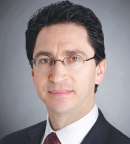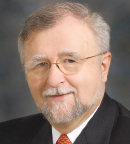
Taking one-fourth the standard dose of abiraterone for prostate cancer with a low-fat breakfast was found to be just as effective as taking the standard dose as recommended on an empty stomach and slashed its cost to patients and payers by 75%. Illustration from iStock.
AT THE 2017 ASCO ANNUAL MEETING, the leaders of the newly formed Value in Cancer Care Consortium (vi3c; vi3c.org) met to discuss the group’s plan to study how to improve the affordability of cancer drugs and make them more accessible to patients. The goal of the Value in Cancer Care Consortium is to investigate how to lower drug costs through optimizing their delivery by reducing the dosage and decreasing the frequency or by substituting a lower-priced generic agent for a higher-priced branded drug without sacrificing the treatment’s effectiveness and benefit to patient outcome.
The launch of the Value in Cancer Care Consortium is supported by a phase II randomized study evaluating the food effect on the pharmacokinetics and pharmacodynamics of abiraterone (Zytiga) in men with castration-resistant prostate cancer.1

Mark J. Ratain, MD
The study, led by researchers at the University of Chicago Medicine, including one of the cofounders of the consortium, Mark J. Ratain, MD, found that reducing the 1,000 mg/d standard dose of abiraterone to 250 mg/d and taking the drug after eating a low-fat breakfast, such as cereal with skim milk, rather than on an empty stomach as directed on the label, appeared to be as effective and may provide patients with the added benefit of fewer side effects, including stomach problems. The study also showed how reducing the dosage of the $9,400-a-month drug could potentially slash its cost to patients and payers by 75%.
The consortium now plans to conduct a larger study of abiraterone to confirm the results of the pilot study, and its scientific advisory committee is in the process of making recommendations for randomized clinical trials for other drugs. The consortium has set a target cost savings of 50% or more on marketed oncology drugs through off-label prescribing.

Allen S. Lichter, MD

Laurence H. Baker, DO

Leonard Saltz, MD
Recently, The ASCO Post held a roundtable discussion with the four cofounders of the Value in Cancer Care Consortium: Allen S. Lichter, MD, Chair, and former Chief Executive Officer of ASCO; Laurence H. Baker, DO, Vice Chair of vi3c and Professor in the Departments of Internal Medicine and Pharmacology at the University of Michigan Medical School in Ann Arbor; Dr. Ratain, Treasurer of vi3c and Leon O. Jacobson Professor of Medicine and Director of the Center for Personalized Therapeutics at the University of Chicago Medicine; and Leonard Saltz, MD, Secretary of vi3c, gastrointestinal oncologist at Memorial Sloan Kettering Cancer Center, and Professor of Medicine at Weill Cornell Medical College. The goal of the roundtable was to learn more about how the group aims to lower the cost of cancer care while improving its value as well as the challenges that lie ahead.
Altering the Cost Trajectory of Cancer Drugs
Dr. Lichter, what was the impetus for launching the Value in Cancer Care Consortium?
Dr. Lichter: The results of the abiraterone study, which showed its dose could be reduced without changing its effectiveness by taking the drug with food instead of on an empty stomach as called for on the label, were extremely compelling to me. For some time, while I was Chief Executive Officer of ASCO, we and others talked about the consequences of the high cost of cancer care and its negative effect on patients and their families and debated how to get a handle on this problem.
The abiraterone study illustrated there was a way to change the cost trajectory of cancer drugs without having to argue about the price of a drug or asking for legislation or regulatory action. I thought it was the most likely and most immediate way to make a positive change in cancer care from a financial standpoint, and that’s what got me interested.

Ian Tannock, MD, PhD

Gabriel Hortobagyi, MD
Mark Ratain, Larry Baker, Len Saltz, and I decided to form this organization, and we were able to get a grant from the Laura and John Arnold Foundation to launch the consortium and establish a scientific advisory committee. This committee is co-chaired by Ian Tannock, MD, PhD [Emeritus Professor of Medicine and Medical Biophysics at Princess Margaret Cancer Centre and University of Toronto], and Gabriel Hortobagyi, MD [Professor in the Department of Breast Medical Oncology at The University of Texas MD Anderson Cancer Center].
Now, we are in the process of raising funds to launch clinical trials, and right now, frankly, that is the missing piece. We have the ideas, and the concepts are compelling. The consequences of this work can reach into the hundreds of millions of dollars in cancer care savings. So, we are looking for organizations that share this goal with us and who are willing to help us provide the resources so we can actually get the work done.
Optimizing Dose, Schedule, and Duration
Are you working with other organizations and societies, including ASCO, and their value in cancer care initiatives to help bring down the cost of cancer drugs?
Dr. Lichter: We have not specifically partnered with other organizations yet. We certainly have had conversations with the leadership at ASCO and with individuals at the National Cancer Institute and the U.S. Food and Drug Administration (FDA), but I think there is value in having a degree of independence to do our work.
“We have the ideas, and the concepts are compelling. The consequences of this work can reach into the hundreds of millions of dollars in cancer care savings.”— Allen S. Lichter, MD
Tweet this quote
Our focus is pretty straightforward. We are saying there are many, many cancer drugs whose dose, schedule, and duration have not been optimized. This is nobody’s fault. A drug gets to market and it has a dose and the drug company and investigators move on to study other drugs, and that’s understandable. But who is left behind to say, is it the right dose, is this the best way to prescribe the drug? All we are saying is let’s do some research and see if we can prescribe these drugs in a way that increases the value of these medicines.
Dr. Baker: We would love to see ASCO support our proposed studies since our aims are consistent with ASCO’s Value Framework initiative.
Defining Value
What is your definition of value in cancer care?
Dr. Lichter: There are different ways to look at value, because it depends on differing perspectives, including patients’, family members’, medical professionals’, policymakers’ and society’s. We have taken a very straightforward approach. On a basic level, value is outcome per unit cost. If something has the same cost but gives a better outcome, it is more valuable. If something has the same outcome but costs less, it is more valuable.
If we could get the same outcome for less cost, which by definition increases the value of a particular therapy, that is how we view the value part of the value consortium.
Dr. Baker: We have deliberately included people in our leadership to represent patients, and they are the first to remind us that we cannot decrease the efficacy of a drug to save money, which is not what we ever mean to do. Value is getting the most out of a situation in which you are not restricted to equating value with price.
Dr. Ratain: We would like to at least double the value of effective therapies by targeting at least a 50% reduction in drugs for comparable efficacy. For individual patients, value will depend on their specific financial situation and insurance coverage and their ability to afford a drug or not.
“We have no interest in changing the drug label on abiraterone, although there are a couple of other drugs that might receive label changes at some point, including ceritinib and nilotinib.”— Mark J. Ratain, MD
Tweet this quote
Dr. Saltz: This is a difficult question to answer because no one has a clear definition of what constitutes value in cancer care. It used to be socially unacceptable to consider cost in health care because it is equated with rationing care, and we have tried to live the fantasy that we could afford to give everything to every patient at the same level and not break the bank. We are slowly confronting the reality that the costs are unsustainable.
I’m worried, for example, about the cost of combinations of drugs when each drug costs over $150,000 per year and the cost of the chimeric antigen receptor (CAR) T-cell therapy, such as tisagenlecleucel (Kymriah), just approved by the FDA for acute lymphoblastic leukemia, which has an initial market price of $475,000? CAR T-cell therapy is currently approved for a very small group of patients with rare cancers, but how we can afford the therapy if it becomes a broader treatment, which we all hope it will?
Providing Dose Alternatives
What has been the reaction from Janssen Biotech, the manufacturer of abiraterone, about the findings from the study, and could the findings result in a label change on abiraterone?
Dr. Lichter: Our work will not likely result in a drug label change. Although the results of the abiraterone study are compelling, they are from a small study, and we are deciding how much of an additional study needs to be done to anchor these results so they become irrefutable. What we want to be able to say to patients and physicians is that there are alternatives to the way the drug is currently prescribed, especially for patients for whom the drug may be financially out of reach. The ability to give one-quarter of the dose for one-quarter of the price may be the difference between the patient taking the drug and getting the benefit and not taking the drug.
STUDIES CONDUCTED BY THE VALUE IN CANCER CARE CONSORTIUM AIM TO:
- Optimize the delivery of existing drugs by decreasing frequency, reducing the dosage, and enhancing drug absorption;
- Generate evidence supporting the substitution of high-priced drugs for existing mechanistically similar and less costly drugs;
- Compare approved drug regimens, where the intervention regimen is safer or less costly with similar efficacy.
Dr. Baker: We are trying to raise funds for the additional study of abiraterone, and it is difficult. It has been suggested that we meet with the leadership of the Centers for Medicare & Medicaid Services (CMS) to see whether there is interest in funding the study because of the potential savings, but we do not have plans to do that yet. It would be great if the leadership of Janssen went with us to a meeting at CMS.
Dr. Ratain: I agree with Dr. Lichter: We have no interest in changing the drug label on abiraterone, although there are a couple of other drugs that might receive label changes at some point, including ceritinib (Zykadia) and nilotinib (Tasigna). There are data showing that if ceritinib is taken with food instead of on an empty stomach as prescribed, the absorption rate is increased by 60% and that prescribing the drug at 450 mg with food instead of 750 mg fasting, the patient receives the same amount of drug in the bloodstream and has the same benefit with less gastrointestinal toxicity. Nilotinib is also prescribed on an empty stomach, because when taken with food the absorption rate increases to nearly 80%, and there is a black box warning that the drug can potentially cause heart arrhythmia and sudden death. Nilotinib is one of the drugs we are suggesting could be studied at a lower dosage with food, which would reduce the cost of the drug and the concern of food-induced death. We believe we could use our knowledge of clinical pharmacology to improve the value of treatments.
“We have tried to live the fantasy that we could afford to give everything to every patient at the same level and not break the bank.”— Leonard Saltz, MD
Tweet this quote
Dr. Saltz: I don’t think our studies can have formal regulatory weight. However, we do hope to create options for patients, and it is possible these options could create a market environment that causes companies to rethink their pricing strategy. There is a lot of talk about the cost of drugs, and it is starting to have some influence. For example, people are beginning to ask, should we only pay for certain drugs when they work or work to some prespecified degree? It is something to think about.
Overcoming Obstacles
What are some of the greatest challenges you face with your value-oriented regimen approach to lowering drug costs?
Dr. Lichter: Without question our biggest challenge is raising the funds to do this work. We predict that each of our studies will cost between $4 and $5 million, but if that investment ends up saving $200 million in oncology medical expenses, we think it would be difficult to find a more efficient and effective way to use those financial resources.
We have the interest of physicians and patients and we have the ideas and know-how to do this work. All we need now are the financial resources to launch new trials. If we can put that together, we can make a real difference in containing the cost of cancer drugs.
Dr. Baker: We are a very small group of physicians with a strong passion to make cancer care more affordable. In addition to needing the funding to conduct the clinical trials, we also need financial resources to get more people fully engaged in this effort.
Dr. Ratain: The easiest part of our work is conducting the studies. Our two challenges are raising the money for the studies and implementing the results off-label, because that is where the pharmaceutical industry is likely to stop the process from happening.
Dr. Saltz: Also, it is difficult to get people to agree that doing clinical trials to reduce financial toxicity is worth doing. Getting people to use economic/value primary endpoints in clinical trials is difficult. Everyone says the endpoint of a study should be to make cancer care better, but I would argue that we have reached the point where making care more affordable is making it better.
COST OF CANCER CARE PROJECTIONS ACCORDING TO THE NATIONAL CANCER INSTITUTE:
- By 2020, there will be 18.1 million cancer survivors in the United States, 30% more than in 2010;
- The estimated cost of care for cancer survivors in 2010 was $137.4 billion. In 2020, the cost is expected to increase to $157 billion in 2010 dollars. (Source: National Cancer Institute Cancer Prevalence and Cost of Care Projections: https://costprojections.cancer.gov)
- One-third of cancer survivors between the ages of 18 and 64 in the United States incurred debt as a result of their treatment, with 55% owing more than $10,000 and 3% having declared bankruptcy. (Source: The State of Cancer Care in America, 2017: A Report by the American Society of Clinical Oncology)
Raising the Issue of Cost of Care With Patients
Nearly all patients with cancer are adversely affected by the high cost of cancer care. Are more oncologists initiating conversations about the cost of care with patients before recommending treatment or giving patients a choice for a lower-cost drug when appropriate?
Dr. Lichter: It is clear that the adverse consequences of the high cost of cancer care is a topic that has come out from behind the curtain and is now front and center in clinical practice both nationwide and worldwide. The cost of care is a delicate conversation to have, and we are not well trained to have these types of discussions with patients. But this is a topic that is gaining increasing attention.
When I started in the field, the number of drugs we had was much smaller, and the cost was inexpensive, so there was no need to talk with patients about cost. Now, with treatments routinely costing upward of $200,000, it is impossible to say that cost is irrelevant.
Dr. Baker: I don’t know if oncologists are having these conversations with patients, but recently I started noticing that some of my patients with gastrointestinal stromal tumors were progressing on imatinib after being stable for a long time. When I questioned them, they said they were skipping doses because they couldn’t afford the drug, which used to cost about $2,000 per month and now costs around $14,000 per month. It is easy to become cynical when you question why a drug that has been around for a long time now costs so much more than it did originally.
Every physician with whom I have spoken has been very supportive of our efforts, and many distinguished physicians in both the community and academic settings have offered to join us in this endeavor.
Dr. Ratain: I don’t know the answer to that question.
Dr. Saltz: I’m not sure either. I don’t think patients want to get into treatment discussions other than to ask about how the drug will affect them. But the way cost is starting to creep into treatment discussions is when oncologists ask about concerns patients may have. We are trying to empower patients to be more open discussing their financial concerns. We know a cancer diagnosis is a leading cause of personal bankruptcy and most patients will incur substantial costs beyond what their insurance will cover. We need both doctors and patients to be aware of this problem.
Impact of Cost on Oncology Practice
How is the cost of care changing how oncologists practice medicine?
Dr. Lichter: Assessing how a patient will be able to afford a specific treatment has become a routine part of oncology practice. Can a patient afford a particular drug? Will the payer pay for the drug? What do we need to do to ensure the patient receives the therapy? These are all questions oncology practices are asking. Most practices will have dedicated staff to negotiate drug pricing, obtain insurance approvals, and find copay assistance for patients. Many individual practice resources are devoted to this issue. What we are doing in the value consortium will not make all of that go away, but it will make things easier for physicians and patients.
Dr. Saltz: I don’t think the cost of care is changing oncology practices yet, but we all know we are in an inflating bubble that can’t last forever. Whenever I say that oncology care costs are unsustainable, no one disagrees, but no one wants to do anything about it, because none of the solutions are easy.
Advice for Oncologists
What advice would you offer oncologists seeking to improve the value of care for patients with cancer while working to reduce the cost of care?
Dr. Lichter: While I was at ASCO and continuing today, we have worked very hard to make the issue of cost more visible and to provide oncology practices with the tools they need to evaluate the value of cancer care and provide support for patients. We encourage physicians to have a frank conversation with patients to destigmatize the issue of cost and help patients realize they don’t have to be embarrassed to raise their concern, and we encourage everyone to use our resources as wisely as possible. The issue of cost is so complex and huge, but the type of work our consortium is doing can help inch by inch to improve the situation for our patients.
“It is easy to become cynical when you question why a drug that has been around for a long time now costs so much more than it did originally.”— Laurence H. Baker, DO
Tweet this quote
Dr. Baker: There are several things oncologists can do to reduce the cost of cancer care. Most important, they should consider their actions. Are they ordering more tests than are necessary? Are they prescribing more drugs than are necessary to combat treatment side effects? Often, patients’ symptoms are a function of loneliness and fear. Being more empathetic and showing more compassion could help relieve some of these symptoms.
Perhaps spending a bit more time with patients to talk about their fears and anxieties can help negate the need to order more tests and write more prescriptions. Of course, the health-care system should be encouraging this behavior rather than urging us to treat more patients.
Dr. Ratain: I would welcome a bundled payment system in which every institution received a fixed amount of money based on the standard costs of medications for each patient. The work we are doing in the Value in Cancer Care Consortium has the potential to reduce drug costs up to 75%, which gives us plenty of flexibility on what we can do with those savings. Physicians should negotiate those deals with their institutions and then follow our advice from our study results.
Dr. Saltz: Be frank and honest with patients about what the actual benefits of a particular drug are, what the potential toxicities (both financial and physical) are, and invite patients to discuss any of their concerns, including financial ones. It is important for us as doctors to be aware of the costs of the drugs we prescribe, as well as the costs of other drugs we might consider. Just making everyone aware of what the actual costs are and getting that information out of the shadows would be a good start toward addressing the problem.
To learn more about the Value in Cancer Care Consortium, visit vi3c.org. ■
DISCLOSURE: Dr. Ratain has appeared as an expert witness for multiple generic drug companies regarding patent litigation. Dr. Saltz has received research support from Taiho Pharmaceuticals. Drs. Baker and Lichter reported no conflicts of interest.
REFERENCE
1. Szmulewitz RZ, Ibraheem AF, Peer CJ, et al: A prospective international randomized phase II study evaluating the food effect on the pharmacokinetics and pharmacodynamics of abiraterone acetate in men with castration-resistant prostate cancer. J Clin Oncol 35(6 suppl):176, 2017.

